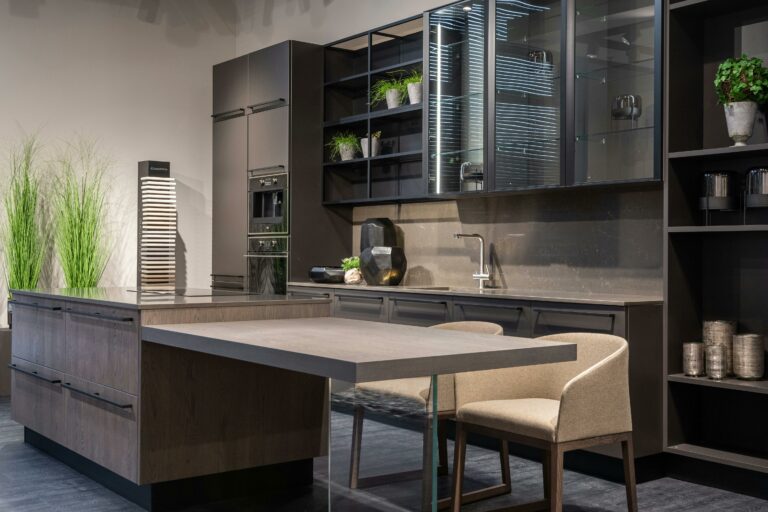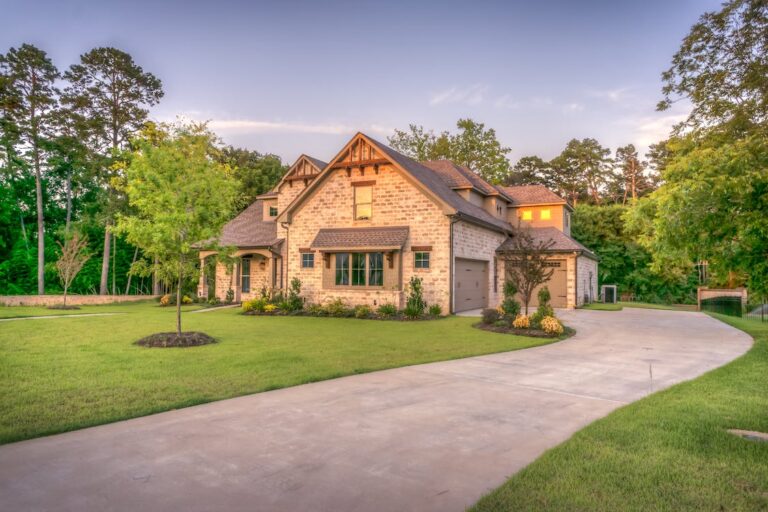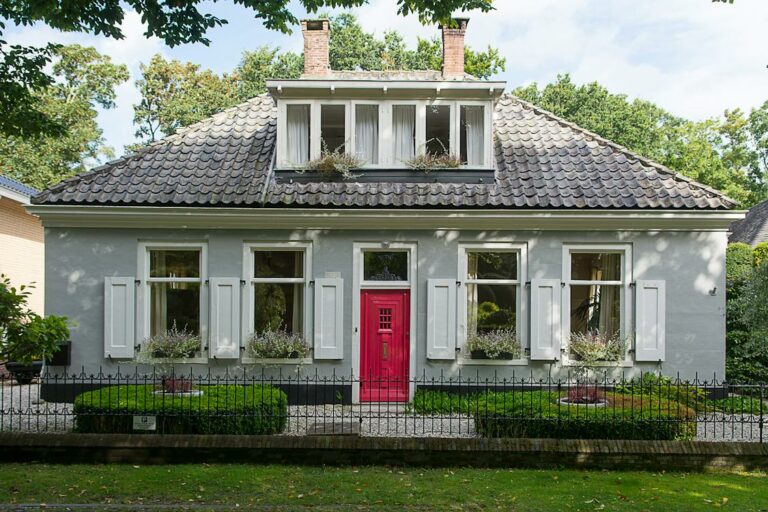Choosing the Right Kitchen Layout for Your Home in 2023
Welcome to your ultimate guide on choosing the right kitchen layout for your home! The kitchen is the heart of the home, where delicious meals and memories are made. But finding the perfect layout can be a daunting task. With so many options available, it’s important to consider various factors before making a decision.
In this article, we will explore different kitchen layouts, discuss the pros and cons of each, and provide helpful tips to create an efficient and functional space. So whether you’re remodeling your existing kitchen or designing a new one, read on to discover the layout that suits your needs and preferences.
But first, let’s dive into some considerations you should keep in mind when choosing a kitchen layout.
Table of Contents
Considerations for Choosing a Kitchen Layout Choosing the Right Kitchen Layout

When it comes to designing your dream kitchen, choosing the right layout is essential. The layout of your kitchen not only impacts the overall aesthetic, but also affects functionality and efficiency. Before you dive into the design process, consider these important factors to help you make an informed decision.
Available Space and Floor Plan
The first consideration for choosing a kitchen layout is the available space and floor plan of your home. Take measurements of your kitchen area and consider the shape and size of the space. This will help determine which layout will work best for you. Whether you have a small or large kitchen, there’s a layout that can maximize your space and make the most of every inch.
Workflow and Efficiency
An efficient kitchen layout is essential for smooth daily operations. Consider your cooking habits and how you move around the kitchen while preparing meals. Different layouts offer various advantages when it comes to workflow and efficiency. Think about the proximity of the refrigerator to the stove, the placement of the sink, and the counter space available for food prep.
Number of Appliances and Fixtures
Consider the number of appliances and fixtures you plan to have in your kitchen. Do you need a large refrigerator? Will you have a dishwasher, range, or double oven? These factors will play a role in determining which layout will accommodate all your appliances effectively.
Now that we’ve covered the considerations for choosing a kitchen layout, let’s explore some of the most common kitchen layouts and their pros and cons.
Common Kitchen Layouts

When it comes to designing your kitchen, choosing the right layout is crucial. The layout will determine how easy it is to move around and work efficiently in your kitchen. Here are some common kitchen layouts to consider:
U-Shaped Kitchen
- This layout consists of three walls of cabinets and appliances that form a U-shape.
- It provides plenty of counter space and storage options.
- It is great for larger kitchens or open floor plans.
- Ideal for those who love to cook and need plenty of space for food preparation.
L-Shaped Kitchen
- This layout features cabinets and appliances along two walls that form an L-shape.
- It is a popular choice for smaller kitchens, as it maximizes space.
- It allows for good workflow and easy movement between work areas.
- Perfect for those who want an efficient kitchen layout with a cozy feel.
G-Shaped Kitchen
- Similar to the U-shaped kitchen, but with an additional peninsula or island connected to one of the walls.
- It provides even more counter space and often includes a breakfast bar or additional seating area.
- Ideal for larger kitchens or those who love to entertain and need extra space for meal prep and socializing.
Galley or Corridor Kitchen
- This layout features two parallel walls of cabinets and appliances, creating a narrow corridor.
- It is a great choice for small or narrow kitchens.
- It allows for efficient workflow, as everything is within easy reach on either side.
- Perfect for those who want a compact and functional kitchen with minimal wasted space.
Open Plan Kitchen
- This layout is all about merging the kitchen with a living or dining room, creating a spacious and open feel.
- It is perfect for those who love to entertain or have a busy household.
- It allows for easy interaction and communication between the kitchen and other living areas.
Each kitchen layout offers its own set of advantages and disadvantages. Let’s take a closer look at the pros and cons of each layout in the next section.
Pros and Cons of Each Layout
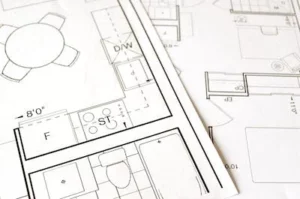
When it comes to choosing the right kitchen layout for your home, it’s important to consider the pros and cons of each option. Let’s take a closer look at some of the most common kitchen layouts and what they have to offer:
U-Shaped Kitchen:
- Pros:
- Provides ample counter space for food preparation.
- Efficiently uses the available space, especially in larger kitchens.
- Offers plenty of storage options with wall and base cabinets.
- Cons:
- May lack sufficient walking space in smaller kitchens.
- Can make it challenging to incorporate a dining area if desired.
- Requires careful planning to ensure proper workflow and efficiency.
L-Shaped Kitchen:
- Pros:
- Offers an open layout, creating a seamless flow between the kitchen and other living spaces.
- Provides flexibility in terms of layout and customization options.
- Allows for easy access to appliances and work areas.
- Cons:
- May have limited counter space compared to other layouts.
- Requires proper organization to ensure efficient workflow.
- Can be challenging to incorporate an island or dining area.
G-Shaped Kitchen:
- Pros:
- Maximizes storage and counter space with additional peninsula or island.
- Provides a well-defined work triangle for efficient cooking.
- Offers a sociable layout, allowing for easy interaction between the cook and guests.
- Cons:
- Takes up more floor space, which may not be suitable for smaller kitchens.
- Requires careful planning to ensure smooth traffic flow.
- Can be more expensive due to the additional cabinetry and countertop needed.
Galley or Corridor Kitchen:
- Pros:
- Maximizes the use of available space, making it ideal for smaller kitchens.
- Offers a straightforward layout with efficient workflow.
- Provides the option for a dual-functioning kitchen with work areas on both sides.
- Cons:
- May lack counter space and storage compared to other layouts.
- Can feel cramped if not properly organized.
- May not accommodate a dining area.
Open Plan Kitchen:
- Pros:
- Creates a spacious and inviting atmosphere by combining the kitchen and living areas.
- Allows for easy interaction between the cook and guests.
- Provides flexibility in terms of layout and design options.
- Cons:
- Requires careful planning to ensure proper zoning of different areas.
- Can be challenging to control cooking odors and noise in an open space.
- May require additional ventilation and lighting considerations.
It’s important to keep in mind that the right kitchen layout for your home will depend on your individual needs and available space. Consider the size of your kitchen, your cooking habits, and the overall design aesthetic you want to achieve. Don’t be afraid to consult with a professional designer or architect to help you make the best decision for your home.
In the next section, we will discuss the factors to consider for each layout, which will further help you make an informed choice when selecting the perfect kitchen layout for your home.
Factors to Consider for Each Layout

When deciding on the perfect kitchen layout for your home, it’s important to take into consideration a variety of factors that will affect not only the functionality but also the overall aesthetics of your kitchen. Here are some key factors to consider for each layout:
U-Shaped Kitchen: Factors to Consider
- Space: One of the main advantages of a U-shaped kitchen is its ability to maximize space. However, it’s important to ensure that you have enough room to comfortably maneuver within the layout. Consider the dimensions of your kitchen and determine if a U-shaped layout will fit without making the space feel cramped.
- Workflow: The U-shaped kitchen offers an efficient workflow, as it provides ample countertop and storage space while keeping everything within easy reach. Assess your cooking habits and decide if this layout will optimize your workflow and make cooking a breeze.
- Traffic Flow: Consider the traffic flow in your kitchen. A U-shaped layout can be ideal for preventing through-traffic, creating a more organized and separate space for cooking. Evaluate how your family or guests typically move around the kitchen and determine if this layout will work well for your needs.
L-Shaped Kitchen: Factors to Consider
- Flexibility: The L-shaped kitchen is known for its versatility, making it suitable for both large and small spaces. Take a look at the available floor space and assess if an L-shaped layout will allow for flexibility in terms of layout and design.
- Work Triangle: The work triangle, consisting of the refrigerator, sink, and stove, is a crucial aspect of any kitchen layout. With an L-shaped kitchen, you can easily create an efficient work triangle by positioning these key elements within close proximity to one another. Evaluate if this layout will optimize your workflow and make moving between these essential areas seamless.
- Island or Peninsula: Consider if you have enough space to incorporate an island or peninsula into your L-shaped kitchen layout. This can provide additional countertop space, storage, and even a seating area, enhancing the functionality and aesthetics of the kitchen.
G-Shaped Kitchen: Factors to Consider
- Space Optimization: The G-shaped kitchen offers even more counter space and storage options compared to the U-shaped and L-shaped layouts. Consider if you have enough room to accommodate the additional cabinetry and countertop space that comes with this layout.
- Accessibility: The G-shaped kitchen layout can be an excellent choice if you desire a more open and accessible kitchen. With the addition of an island or peninsula, you can create a central gathering area while maintaining the efficiency of a traditional kitchen triangle. Evaluate if this layout will allow for easy navigation and socialization within the space.
- Island or Peninsula: Determine if you have enough space to incorporate an island or peninsula with your G-shaped kitchen. This will provide additional workspace, storage, and seating options, transforming your kitchen into a multifunctional area.
Galley or Corridor Kitchen: Factors to Consider
- Space Efficiency: One of the primary advantages of a galley or corridor kitchen is its space efficiency. Evaluate the available floor space and consider if this layout will maximize the use of the area without feeling cramped.
- Workflow: This layout is ideal for creating an efficient workflow, as everything is within easy reach. Determine if a galley or corridor kitchen will allow you to easily move between the different work stations and optimize your cooking experience.
- Natural Light and Ventilation: Since galley kitchens typically have only two walls, natural light and ventilation may be limited. Consider if there are ways to incorporate additional windows or light sources to ensure your kitchen feels bright and welcoming.
Open Plan Kitchen: Factors to Consider
- Integration with Other Spaces: An open plan kitchen seamlessly integrates with other living areas, creating a spacious and social environment. Think about how you envision your kitchen blending with your dining and living spaces, and whether an open plan layout will suit your lifestyle.
- Entertaining: If you love to entertain, an open plan kitchen provides the perfect setting for hosting guests. Consider if this layout will allow for easy interaction between the kitchen and the rest of the living area, making entertaining a breeze.
- Noise and Privacy: It’s important to evaluate if an open plan kitchen will result in increased noise levels or impact privacy in areas like bedrooms or home offices. Think about how this layout will affect the overall ambiance and functionality of your home.
Each kitchen layout offers its own unique advantages and considerations. By taking into account factors such as space availability, workflow, traffic flow, and integration with other spaces, you can choose the layout that best suits your needs and enhances the functionality and style of your kitchen. Happy kitchen planning!
Additional Design Tips for an Efficient Kitchen
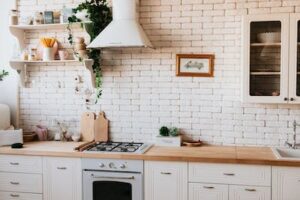
When it comes to designing an efficient kitchen, there are a few additional tips and tricks that can help you make the most of your space. These design considerations will not only enhance the functionality of your kitchen but also create an aesthetically pleasing environment. Here are some additional design tips for an efficient kitchen:
Maximizing Storage Space
One of the key aspects of an efficient kitchen is having enough storage space to keep your utensils, cookware, and ingredients organized. Here are a few ideas to maximize storage in your kitchen:
- Utilize vertical space: Install tall cabinets or open shelves to make use of the vertical space in your kitchen. This will help you store items that are used less frequently or display decorative pieces.
- Add pull-out drawers: Install pull-out drawers in your cabinets to make it easier to access items stored at the back. This will eliminate the need for rummaging through the cabinets and save you time and effort.
- Invest in a kitchen island or cart: A kitchen island or cart with storage drawers and shelves can provide additional storage space while also serving as a versatile workspace.
Choosing the Right Materials and Finishes
The materials and finishes you choose for your kitchen can have a significant impact on its efficiency as well as its aesthetic appeal. Here are some considerations:
- Countertops: Opt for durable, easy-to-clean materials such as quartz or granite for your countertops. These materials are not only visually appealing but also resistant to stains and scratches.
- Flooring: Choose flooring materials that are durable and easy to maintain, such as ceramic tiles or vinyl flooring. These materials can withstand heavy foot traffic and spills easily.
- Cabinetry: Select materials for your cabinets that are both durable and visually pleasing. Wood veneers or laminates are popular choices as they are easy to clean and maintain.
Optimizing Lighting and Ventilation
Proper lighting and ventilation are essential for creating an efficient kitchen environment. Here are a few tips to optimize these aspects:
- Natural light: If possible, maximize natural light by incorporating large windows or skylights in your kitchen design. Natural light not only brightens up the space but also reduces the need for artificial lighting during the day.
- Task lighting: Install task lighting, such as under-cabinet lights, to illuminate specific work areas in your kitchen. This will ensure that you have sufficient lighting when preparing meals or working on the countertops.
- Ventilation: Invest in a good quality range hood or exhaust fan to remove steam, smoke, and odors from the kitchen. Proper ventilation will help maintain a fresh and clean environment while cooking.
By considering these additional design tips for an efficient kitchen, you can create a space that not only looks great but also functions optimally. Remember to prioritize your own needs and preferences when making design decisions and seek professional advice if needed. Happy designing and cooking!
Also read; Luxury Bedroom Design Ideas for a Five-Star Experience in 2023
Conclusion
In conclusion, choosing the right kitchen layout for your home is a crucial decision that can greatly impact the functionality and aesthetics of your space. By considering factors such as available space, workflow, and the number of appliances and fixtures, you can determine which layout will work best for your needs.
Some common kitchen layouts to consider include the U-shaped kitchen, L-shaped kitchen, G-shaped kitchen, galley or corridor kitchen, and open plan kitchen. Each layout has its pros and cons, so it’s important to weigh them against your own preferences and requirements.
Factors to consider for each layout include the size and shape of your kitchen, the location of windows and doors, and the need for flexibility in your space. By taking these factors into account, you can make an informed decision that will result in a kitchen layout that suits your lifestyle.
Additionally, there are some additional design tips that can help make your kitchen more efficient. Maximizing storage space, choosing the right materials and finishes, and optimizing lighting and ventilation are all key factors to consider in the design process.
Remember, your kitchen should be a space that is both functional and aesthetically pleasing. It should reflect your personal style while also meeting your everyday needs. By carefully assessing your options and considering these important factors, you can create a kitchen layout that you will love for years to come.
So go ahead, start planning your dream kitchen layout and enjoy the journey of creating a space that brings joy and functionality to your home. Happy designing!
Frequently Asked Questions
- What are the different types of kitchen layouts?The different types of kitchen layouts include: 1. U-shaped, 2. L-shaped, 3. Galley, 4. Island, and 5. Peninsula.
- How do I determine the right kitchen layout for my home?To determine the right kitchen layout for your home, consider factors such as the available space, your cooking style, workflow preferences, and the overall design aesthetic you want to achieve. It’s also helpful to consult with a professional kitchen designer for expert advice.
- What is the most efficient kitchen layout?The U-shaped kitchen layout is considered the most efficient as it offers ample countertop space, maximizes storage options, and provides a good workflow between the cooking areas. It also allows for easy movement between different work zones.
- What are the advantages of having an island in the kitchen?Having an island in the kitchen provides additional countertop space for food preparation, can be used as a casual dining area, and offers extra storage options. It also serves as a focal point and enhances the overall aesthetic appeal of the kitchen.
- Can I modify my existing kitchen layout?Yes, it is possible to modify your existing kitchen layout to better suit your needs. However, it may require professional assistance and careful planning to ensure that the modifications are feasible and meet building codes and regulations.


